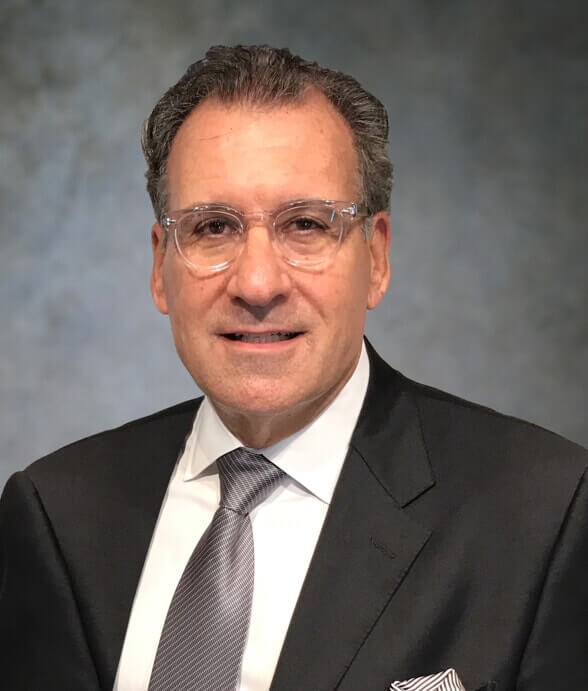In the ever-changing world of healthcare, leaders face unique challenges and opportunities. Allegro recently sat down with industry veteran Doug Badertscher, CEO and Director of Pain Specialists of America (PSA), to gain some insights on the dynamics of pain management, the impact of private equity, and strategies for fostering a strong workplace culture.
The Evolving Landscape of Healthcare
The healthcare landscape is complex and multifaceted, demanding skilled and adaptable leaders. Insights from seasoned professionals illuminate the unique challenges those at the helm face. Understanding these dynamics is essential for fostering innovation and driving progress in patient care.
In this evolving environment, effective leadership involves navigating regulatory changes, managing diverse teams, and responding to the increasing demand for high-quality patient outcomes. The ability to balance these responsibilities can significantly impact an organization’s success.
Career Journey and Return to Pain Specialists of America
The journey through the healthcare sector is often non-linear, marked by various roles and experiences. After an impactful tenure as CEO of Pain Specialists of America, Doug started a new chapter with National Spine and Pain, a significant player in the field. This role provided invaluable insights into the operational intricacies of a large, private equity-backed organization.
During a year-long hiatus, Doug found time for reflection and personal growth. Engaging in leisure activities like golf and travel allowed him to renew his perspective on professional aspirations. Conversations with industry peers during this period further shaped his decision to return to the familiar environment of Pain Specialists of America.
The call to rejoin the organization resulted from its strategic reset, which presented an opportunity to leverage past experiences meaningfully. His familiarity with the team and the organization’s new direction made his decision to return a natural choice.
Challenges in the Healthcare Industry
Upon his return to PSA, the healthcare industry faced many challenges impacting both operations and patient care. Rising costs, regulatory pressures, and shifting patient expectations added more challenges to a demanding sector.
The ongoing evolution of reimbursement models requires constant adaptation, and organizations must find ways to deliver value while maintaining financial viability. This often means reevaluating service delivery models and ensuring that staff are equipped to meet the market’s changing demands.
That’s why Badertscher believes fostering a culture of resilience and adaptability remains essential. Leaders must create an environment where teams feel empowered to innovate and respond to challenges proactively.
Minimally Invasive Surgery and Patient Care
Pain management is a specialized field that presents both challenges and opportunities. The trend towards minimally invasive surgery is reshaping patient care within pain management. These procedures often result in less trauma to the body, shorter recovery times, and lower rates of complications.
This model reduces costs and allows for better resource allocation within healthcare facilities. Patients benefit from a streamlined process that prioritizes their comfort and recovery.
As the field continues to evolve, staying in step with technological advancements is crucial. Embracing innovation improves patient outcomes and positions practices as leaders in the industry.
Operational Strategies for High-Quality Outcomes
Operational excellence is critical to achieving high-quality outcomes in healthcare. This philosophy must permeate all aspects of the organization, from administrative processes to clinical practices.
Developing a strong team culture is equally important. Investing in staff training and fostering open communication channels create an environment where team members feel valued and empowered. The selection of physicians plays a pivotal role in maintaining high standards. The right team can drive innovation and elevate the overall patient experience.
Addressing the Opioid Epidemic
The opioid epidemic has cast a long shadow over the pain management industry, affecting perceptions and practices alike. This crisis, marked by widespread misuse and addiction, has necessitated a thoughtful approach to patient care. Leaders in pain management must navigate this landscape with a commitment to ethical practices while ensuring patients receive the relief they need.
Badertscher knows that providers must prioritize alternative treatments and innovative therapies that do not rely solely on opioids. By employing a multidisciplinary approach, you can offer comprehensive pain management that addresses the root cause rather than merely masking symptoms. This strategy improves patient outcomes and helps restore trust in the healthcare system.
Building a Strong Company Culture
Establishing a strong company culture is essential for any healthcare organization, particularly in the context of rapid growth and integration. Badertscher believes in articulating the organization’s mission and values from day one to ensure all team members understand the expectations and goals. Regular town hall meetings provide a platform for open discussions about culture, allowing employees to voice their opinions and contribute to the cultural narrative.
Integrating fun and fellowship into the workplace can also enhance relationships among staff. Celebrating milestones and achievements, both personal and professional, fosters a sense of community that can improve morale and retention rates.
The Importance of Communication and Trust
Effective communication is the backbone of any successful organization. In healthcare, where collaboration is essential for patient care, fostering a culture of open dialogue is particularly important. Regular updates and opportunities for feedback can help build trust among team members and leadership.
When employees feel heard and valued, they are more likely to remain engaged and motivated. This trust also extends to patient interactions, where transparent communication can enhance the patient experience. Patients who feel informed and involved in their care are more likely to adhere to treatment plans and achieve better outcomes.
Creating communication channels, such as anonymous feedback tools or regular check-ins, can help identify areas for improvement and foster a culture of accountability. Ensuring that leadership practices what it preaches by being accessible and responsive further solidifies trust within the organization.
Retaining Talent in a Competitive Market
In today’s competitive healthcare landscape, retaining talent is more crucial than ever. The post-pandemic environment has shifted expectations, with many employees seeking more than just competitive salaries. Job satisfaction now encompasses work-life balance, professional development opportunities, and a positive organizational culture.
Implementing strategies to enhance employee engagement can significantly impact retention rates. These include offering flexible work arrangements, providing opportunities for skill development, and recognizing employee contributions. Regular performance reviews and career progression discussions can also help employees feel valued and invested in their roles.
Badertscher believes in understanding unique motivations and taking a more tailored approach to retention. Employee surveys can provide insights into what team members value most, allowing you to adapt your strategies accordingly.
Post-Pandemic Changes in Healthcare
The pandemic has catalyzed significant changes in the healthcare sector, prompting organizations to adapt quickly to new realities. Telehealth emerged as a vital service, providing patients with access to care while minimizing the risk of infection. As a result, integrating technology into everyday practices has become essential for meeting patient needs.
The pandemic also underscored the importance of mental health, leading to increased demand for services that address both physical and emotional well-being. So, healthcare leaders must prioritize holistic approaches that consider the mental health of both patients and staff.
Future Trends in Pain Management
The field of pain management is poised for transformative changes, driven by advancements in technology and a deeper understanding of pain mechanisms. Emerging trends are set to redefine how pain is assessed, treated, and managed. A focus on personalized medicine is becoming increasingly prevalent, tailoring treatments to individual patient profiles.
One significant trend is the integration of genetic testing into pain management protocols. By understanding a patient’s genetic makeup, healthcare providers can better predict responses to various pain medications, optimizing treatment efficacy while minimizing side effects. This approach enhances patient outcomes and promotes a more responsible use of medications.
The rise of wearable technology is also revolutionizing pain management. Devices that monitor physiological responses can provide real-time data, allowing for timely interventions. This proactive approach can significantly improve the quality of life for patients suffering from chronic pain conditions.
The Potential of Telemedicine
Despite its benefits, telemedicine is not a one-size-fits-all solution. Certain conditions require in-person evaluations for accurate diagnosis and treatment. However, telemedicine can be highly effective for routine follow-ups or medication management. Its flexibility allows patients to engage with healthcare providers without extensive travel, making it an attractive option for many.
As technology continues to evolve, the potential for telemedicine in pain management will expand. Future innovations may include advanced remote monitoring tools that enable providers to track patient progress more effectively. This could lead to more personalized treatment plans and improved patient adherence to prescribed therapies.
Advice for Healthcare Leaders
Healthcare leaders play a crucial role in navigating the complexities of modern pain management. They must embrace innovation while maintaining a patient-centered approach. Leaders should foster a culture of collaboration, encouraging interdisciplinary teams to collaborate in pursuit of improved patient outcomes.
Investing in staff training is another vital component. As new technologies and treatment modalities emerge, ongoing education ensures that healthcare providers remain proficient in the latest techniques. This commitment to professional development enhances care quality and boosts staff morale and retention.
Badertscher understands the importance of prioritizing open communication within your organization. Creating platforms for dialogue can help address concerns and gather insights from team members. By involving staff in decision-making processes, you can cultivate a sense of ownership and accountability, ultimately leading to better patient care.
Conducting the Orchestra of an Organization
Badertscher gave us a compelling analogy — comparing leading a healthcare organization to conducting an orchestra. Each member brings unique skills and perspectives, contributing to a harmonious patient care experience. You must strive to ensure that every voice is heard, fostering an environment of collaboration and respect.
As the complexities of pain management evolve, healthcare leaders must remain adaptable and proactive. By embracing change and encouraging innovation, you can position your organization for success in an ever-changing environment. The ultimate goal is to create a symphony of care that resonates with patients and providers, delivering high-quality outcomes and compassionate service.
Frequently Asked Questions
What are the emerging trends in pain management?
Emerging trends include personalized medicine through genetic testing, wearable technology for real-time monitoring, and a focus on multidisciplinary treatment approaches.
How has telemedicine impacted pain management?
Telemedicine has increased access to care, allowing virtual consultations that facilitate timely assessments and follow-ups, especially for patients in remote locations.
What should healthcare leaders prioritize in pain management?
Healthcare leaders should prioritize innovation, staff training, open communication, and a collaborative culture to enhance patient care and organizational effectiveness.
Why is a patient-centered approach important in pain management?
A patient-centered approach ensures that treatment plans are tailored to individual needs, improving patient satisfaction and outcomes while fostering trust between patients and providers.
How can organizations prepare for future changes in pain management?
Organizations can prepare by investing in technology, fostering a culture of innovation, and staying informed about emerging research and treatment modalities in the field.



